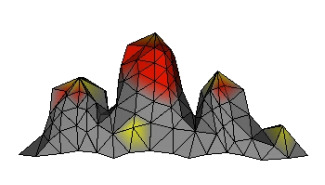New model simulates effects of genes on the development of organisms

In recent years, genomics has produced an increasing amount of information on genes. Although it is known that genes largely determine the characteristics of organisms, genomic information is not directly revealed. In some cases the gene responsible for specific phenotypic characteristics (e.g. diseases or tooth shape) can be identified, but generally the relationship between genes and the characteristics of organisms (generally known as genotype-phenotype) is not as clear. The code or logic by which genes produce the body is not yet fully understood.
Isaac Salazar Ciudad, researcher of the Department of Genetics and Microbiology at Universitat Autònoma de Barcelona, works to try and clarify how genes interact to produce the entire body. Instead of focusing directly on genomic information or functional information about a single gene, his work focuses on integrating experimental information at the level of interactions among many genes during embryonic development. He studies the embryonic stage given that it is the most important in the interactions between genes to determine the phenotypic characteristics of organisms (e.g. shape).
The study published in Nature offers a mathematical model that integrates all known interactions in the development of teeth to predict quantitatively how their final shape (in adults) will be and how they develop. The model was built in collaboration with researcher and co-author of the study Jukka Jernvall of University of Helsinki, who has years of experience in the development and evolution of teeth. The real interest of this work lies in the fact that the model explicitly proposes a type of relationship between genes and morphology.
This model differs from other mathematical models of genotype-phenotype relationship in four ways. First, in the biological realism with which it considers the interactions between genes and between cells. Second, the accuracy of the predictions. The model reproduces how a tooth changes from a group of identical cells into a complex three-dimensional structure to form a molar tooth (the model quantitatively predicts the position in space of each cell). Third, the model is able to explain how the morphology of a tooth changes when a gene is changed, which helps understand the relationship between morphology and genes. Fourth, the model is able to reproduce, through small changes in genes, the differences (at the level of tooth morphology) between individuals of a population. This article discusses a seal population of Lake Ladoga (Russia). The interest is not in this population, but in the fact that the model demonstrates a correct degree of understanding of the development of teeth so as to explain the origin of the subtle morphological differences between individuals in a population. The model also indicates which gene interactions are responsible specifically for each individual difference.
With the amount of genomic information available today, the next step will be to understand how this information translates into a more precise understanding of the phenotype. The article is relevant in this direction as it presents an explicit and precise model of how genes are related to morphology. Understanding this relationship is crucial to comprehending the consequences of artificial genetic modifications and natural genetic variation. This work is also relevant to the study of evolution. Until recently evolution was explained as based on competition over time among individuals adapted differently to the environment. Why and how individuals are different is not explained. This article, explaining how specific morphological variations are possible through genetic variation helps to understand the direction of evolution as a game between possible morphological variation (in each generation) and natural selection (in each generation).
Isaac Salazar Ciudad is a Ramon y Cajal researcher and lecturer of Genetics at the Department of Genetics and Microbiology, UAB. His research focuses on the genetic mechanisms of development and morphological evolution in animals. He has worked on the development of the fruit fly and the teeth of mammals, as well as on the theoretical foundation of current evolutionary theory. He earned his doctoral thesis in Barcelona (UB and UPC) and held a postdoctoral fellowship in Helsinki (Institute of Biotechnology, University of Helsinki).


